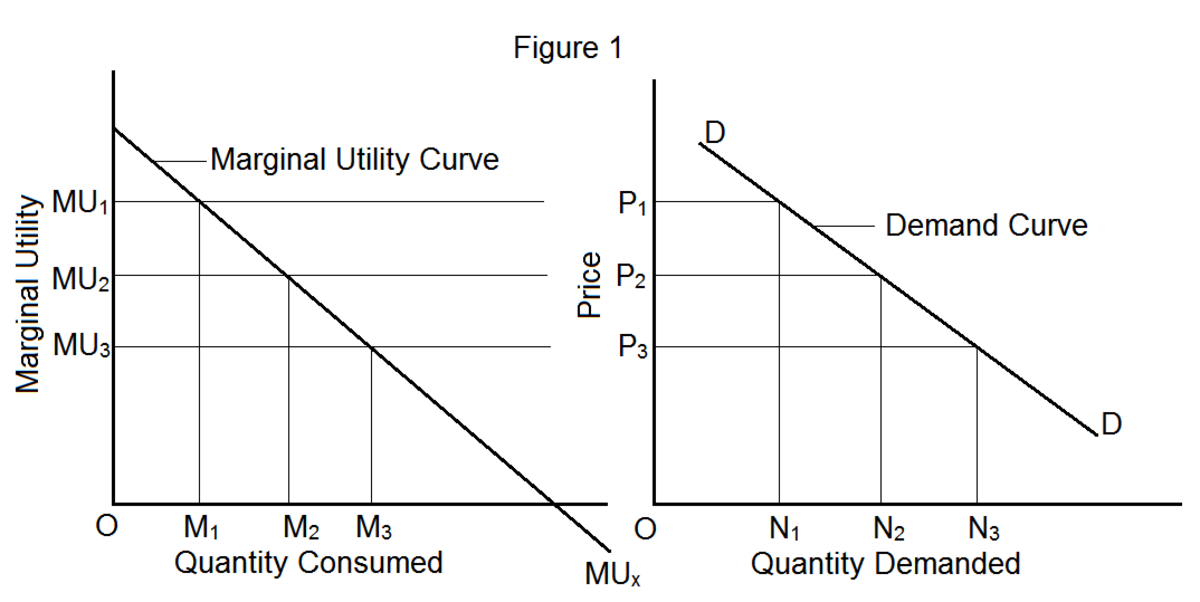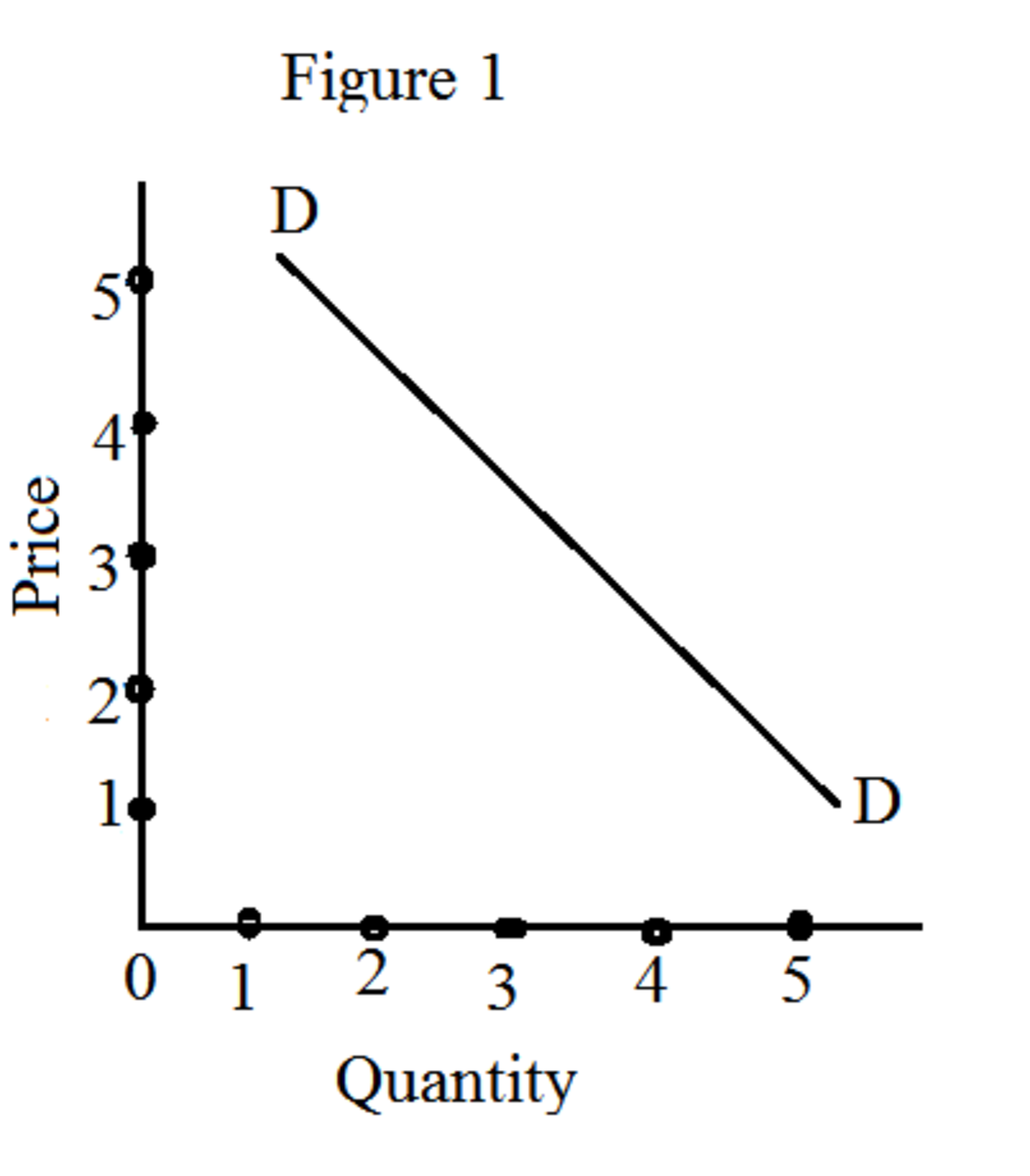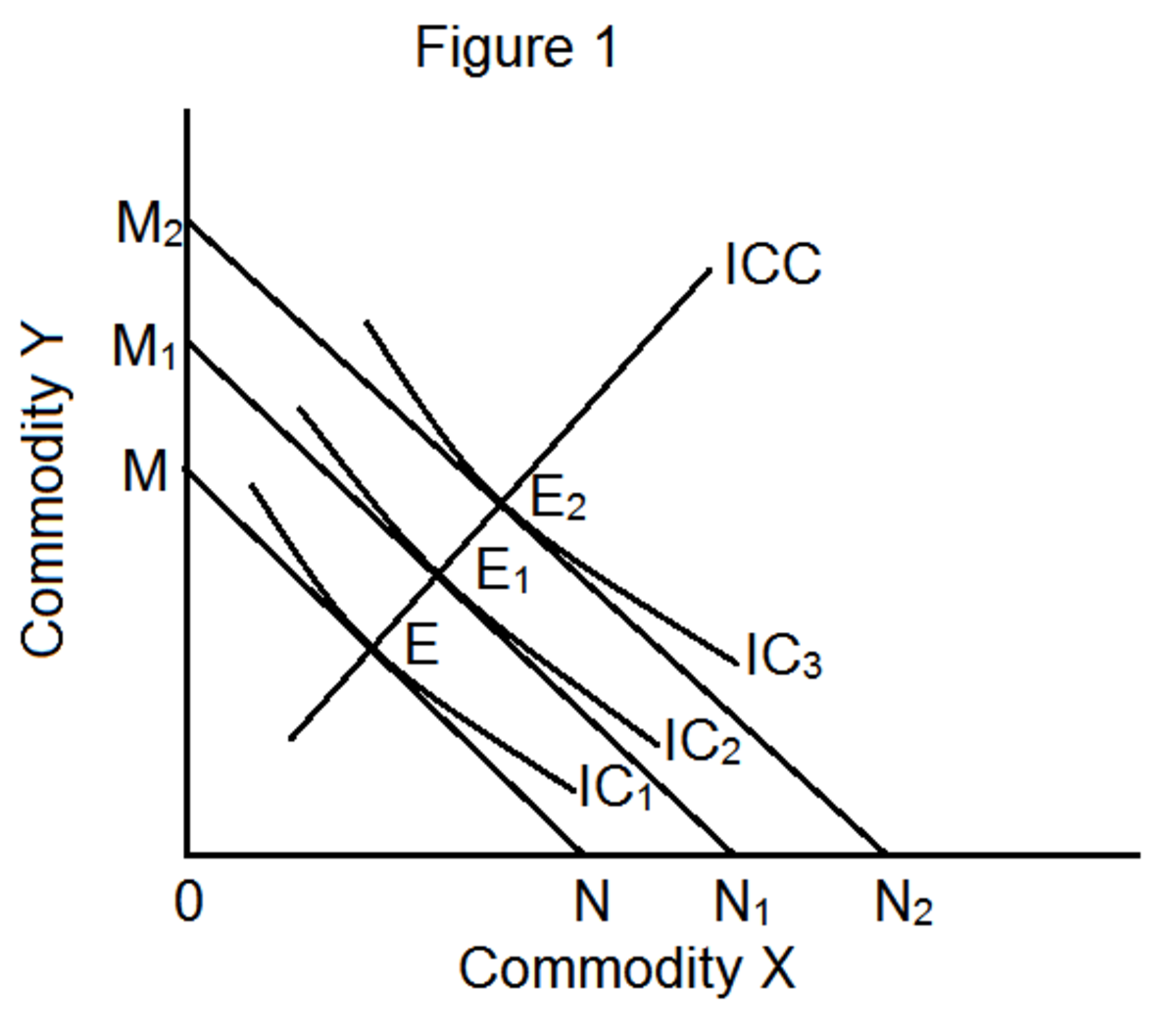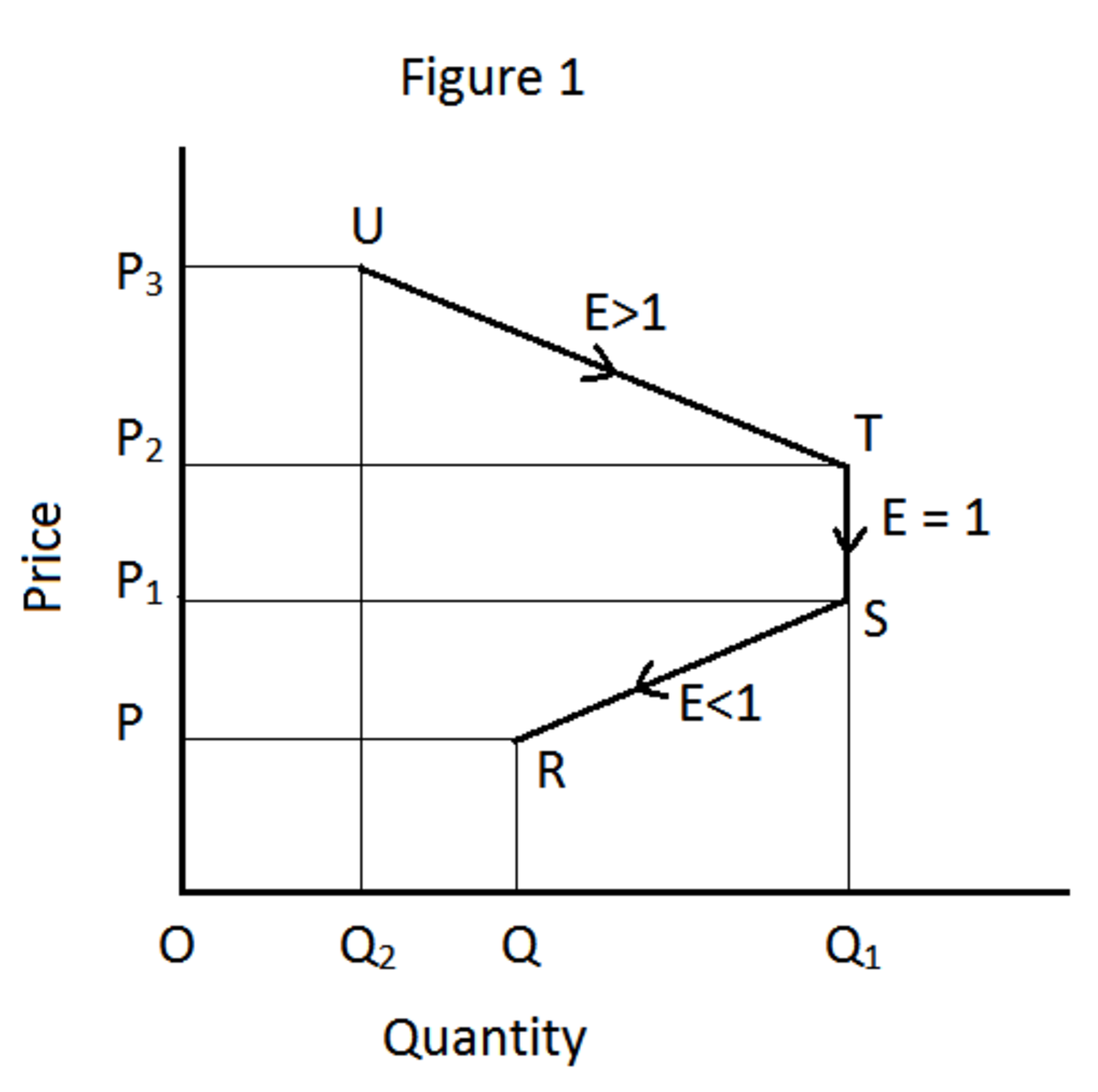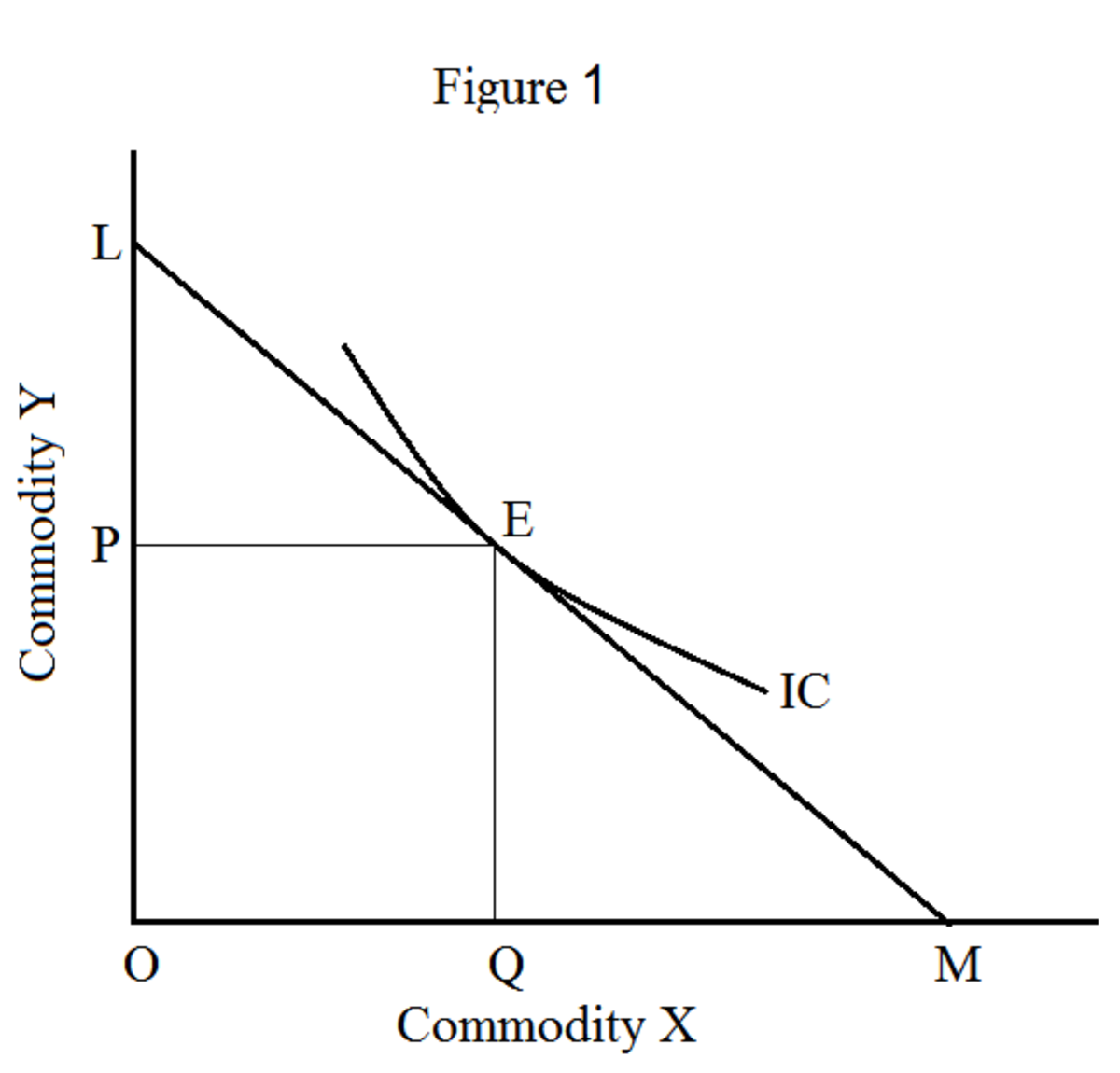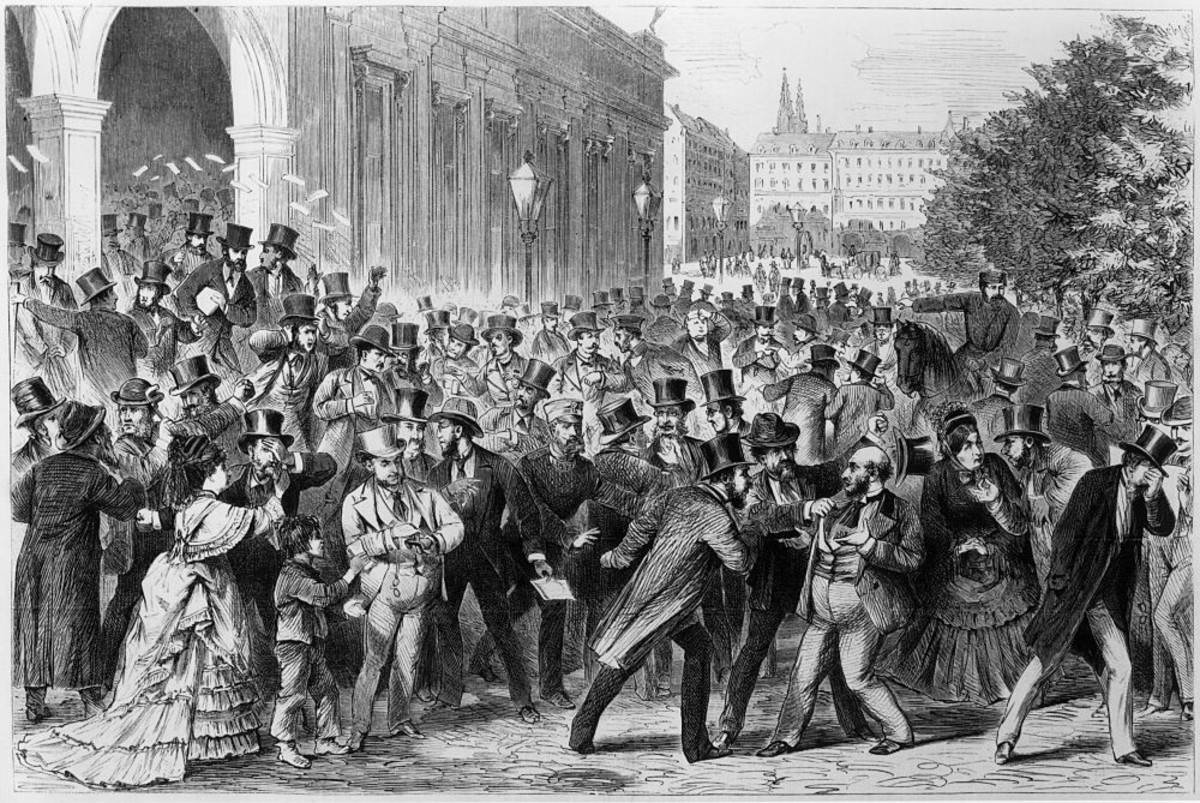What is a Demand Curve?
The demand curve has a self explanatory name for people who studied Economics and related sciences. In a simple way, it is a curve that shows the quantity demand (necessity, need or just the desire) for a determined product or service according to the Price.
This can be rather simple, but behind the graphic there are lots of information that it is possible to get.
The Demand curve is usually shown in a graph, with the Quantities in the X axis, and the Price in the Y axis, and for each value in one axis, there is a value in the other axis. This values are the relationship between the quantity demanded at a price the people could pay.
This was the simple explanation, but the Demand curve has characteristics depending on the product, characteristics such as, elasticity, linear or curve, possible to shift, different curve along the line, units measurement and others.
In this hub we will analyze what is the demand curve and examples of real situations where the demand curve can be applied.
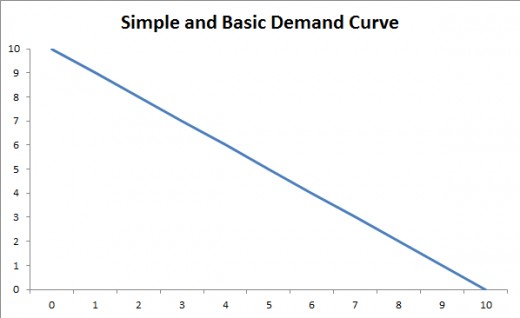
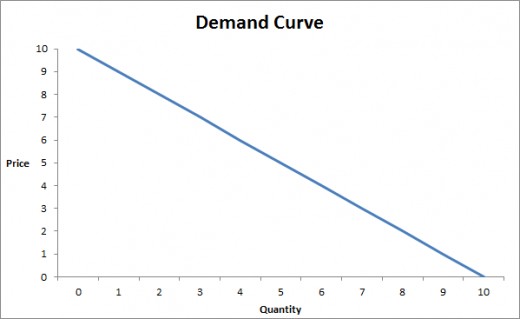
The simple and basic linear Demand curve
This is the most simple and linear demand curve, it is the basis for every demand curve and the easiest way to learn.
The basic principles for the curve are simple, there is a single consumer that wants a product but depending on the price, the consumer will want a different quantity. For this example imagine he wants to buy plates and he will buy more or less depending on the price.
The consumer will want to buy
- 5 plates if the price is $5/each.
- 0 plates if the price is $10 (imagine for $10 he prefers to eat in bowls)
- 10 plates if the price is $0 (Imagine 10 is the maximum he wants)
- For every change of $1 he will change the demanded quantity by 1 plate.
The several characteristics of the Demand Curve
These are some changes that you can make to a simple linear demand curve.
- Possible Shifts
- Linear vs Non Linear
- Price Elasticity
- Taxes and Subsidies (related to Possible Shifts)
These are explained under and it is the basics for a demand curve adapted to the reality.
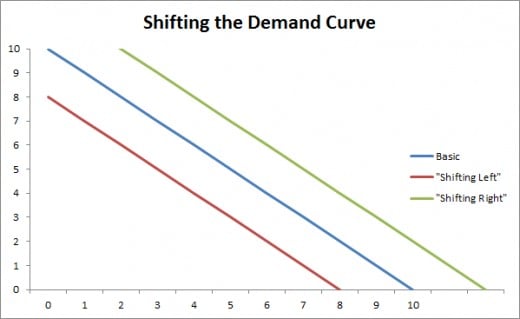
Possible shifts on the demand curve
There is a possibility to shift the demand curve to either side. The demand for the product can increase or decrease and that will lead to a similar demand curve but with a shift to the left or the right.
These are the main reasons for possible shifts in the curve:
- Changes in the consumer income;
- Changes in the consumer expectation;
- Changes in taste or preference;
- increasing population.
When relating to the example above these can be possible changes:
- The consumer got a raise in the paycheck; (Willing to pay more for a plate or buy more plates)
- The consumer is expecting to get married and will want more plates; (Additional plates for the wife)
- The consumer now prefers to eat on bowls and will not want plates; (Even if the plates price is $0,1 the consumer will prefer bowl and will not buy plates)
- The consumer is having a baby and will need more plates. (Need for additional plates)
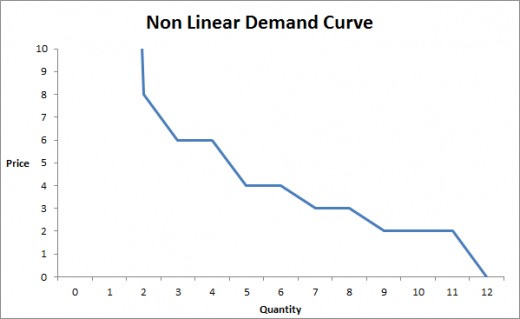
Non-Linear Demand Curve
The demand curve does not have to be completely linear since the consumer demand is not a simple relationship between price and quantity. The consumer demand for a product is not infinite and many times an increase in the price will lead to a search for an alternative product.
Continuing the Plate example, assuming the consumer needs 6 plates for his new house and he is willing to pay $4/each, he will not simply want 5 plate if it costs $5. This is explained on the link under by the Price Elasticity for the products.
The demand will be non linear since if each plate costs $2, the consumer will probably buy 12 plates, since for the same cost he will get the double. However if the plate cost goes under $2, he will still want 12 plates, because he will not have space for more and will be unnecessary.
If the plates cost more than $4, he will probably just buy the indispensable, maybe 4 plates if it costs $5, but if it goes above that price, 2 plates will be enough.
This is how you achieve a non-linear demand curve.
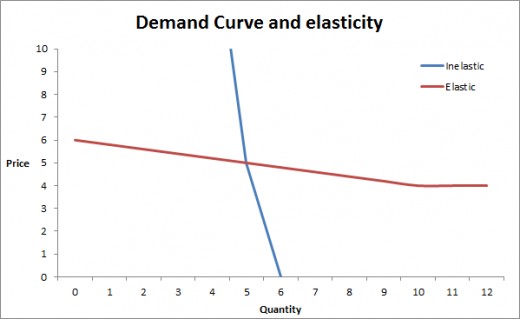
The Price Elasticity
- What is Price Elasticity of Demand?
The Price Elasticity of Demand is a measure of the response of the quantity demanded of a good when the price changes. It is used to measure the impact of price changes in the quantities to be sold, this can be special useful if a company want to mea
Taxes and Subsidies on the Demand Curve
This is a small explanation how taxes and subsidies can affect the Demand Curve.
Taxes
- Taxing the consumer will lead him to have less money and shifting the demand curve to the left.
- Taxing the product will lead to an increase in the product price, reducing the demanded quantity and shifting the demand curve to the left.
Subsidy
- Subsiding the consumer can lead to two options, the consumer will be able to buy more or will be willing to pay more for a product.
- Subsiding the product will lead to a decrease in price, shifting the demand curve to the right.
The Demand Curve related with the reality.
These are two different products and how you can relate them with the demand curve. These are real products but no real data, in order to be easier to understand.
- The Soda Market
The soda market has a wide market with lots of consumers to sell Sodas but a low range of prices. The consumers will be willing to pay a maximum price and due to the high competition, if Soda A increases the price, the consumers will immediately move and buy soda B.
- An Hotel in Ukraine Countryside.
This is a specific example to show how a service can have a limited demand and clearly non-linear.
If the prices are too high, the clients will prefer to sleep in another place, but you still know there aren't many hotels as yours, your competition is very low.
If the prices are too cheap, there is a maximum number of clients you can achieve since it is necessary that the potential clients are in the area during that specific time. Even if the price is $1, the demand is limited to an amount of tourists that has to be looking for an hotel in the Ukraine Countryside and nowadays that number can be close to zero.
Law of Demand according the Khan Academy
How the Demand curve is usually applied
- What is Supply and Demand?
The Supply and the Demand are the basic two sides of the Free Market Economy. They are essential to understand how the economy flows and how the price and quantities in the market are defined.

